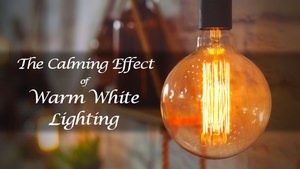Although color temperature may sound like just another confusing lighting term, it is a vital factor in choosing the right light bulb for your needs.
When it comes to selecting the right kind of light bulbs for you, some specifications are necessary to allow a bulb to work properly in your fixture, but others come down to personal preference. The good news is that color temperature is one of those personal preferences.
The even better news is that I’m here to walk you through everything you need to know about color temperature, and help you discover which color temperatures you prefer.

What is Color Temperature?
Measured in Kelvin (K) degrees, color temperature isn’t something you can actually feel (unlike the cold outdoor temperature of Minnesota today). Rather, color temperature is simply the measurement of how warm or cool the light from a bulb will appear.
The Kelvin (K) measure of color temperature can range from 1,000K to 10,000K. However, the most common range for light bulbs is between 2,000K and 6,500K.
Which Color Temperature is Which?
If you’ve ever shopped for a light bulb, you have probably come in contact with descriptions of color temperature, whether you noticed it or not. Terms like "warm white", "cool white", and "daylight" are dead giveaways that color temperature is being discussed.

Although you can find just about anything, there are a few standard color temperatures to look for:
- 2,700K-3,500K: These are your typical "warm white" light bulbs. The light they give off has a slightly orange or yellow hue to it, making spaces lit with these bulbs cozy and calming.
- 4,100K-5,000K: This range of color temperatures makes up "cool white" light bulbs. Often used to light commercial settings, these light bulbs cut out that orangey tint from the warm white bulbs and appear closer to pure white.
- 6,000K-6,500K: Light bulbs in this Kelvin range are referred to as “daylight” because their light is similar to the natural light of the sun at noon on a cloudless day. These light bulbs can have a slight bluish tint and appear to be the brightest of the color temperatures.
To see these color temperatures in action, try out our Color Temperature Selector.
What Color Temperature Should I Use?
While color temperature is a completely personal preference, there are a few things to note when selecting a light bulb. Color temperature creates a certain kind of ambiance in the room you are lighting and can even affect your mood. You will want to keep this in mind as you light bulb shop.

Daylight bulbs are great for task-oriented lighting in areas like kitchens. If you’re looking to light a bedroom you might want the more calming effect of warm white light, whereas the best lighting for a home office or gym can be achieved with more stimulating, cool-toned light bulbs.
If you’re going for a fresh, modern feel, check out cool white light bulbs (4,100K-5,000K). On the other hand, if you’re into a more retro look, warm white (2,700K-3,500K) is the way to go. However, if you're indecisive like I am, you can even find a bulb that does both, like this one!
Conclusion
Color temperature is an important specification when it comes to selecting the right bulb for your space. The Kelvin (K) measurement gives us a way to describe the color of the light and the different ranges provide a ton of options to choose from.
It all comes down to how you want the lighting in your space to affect the people in it. Play around with color temperatures and make your light bulb do that work for you!






